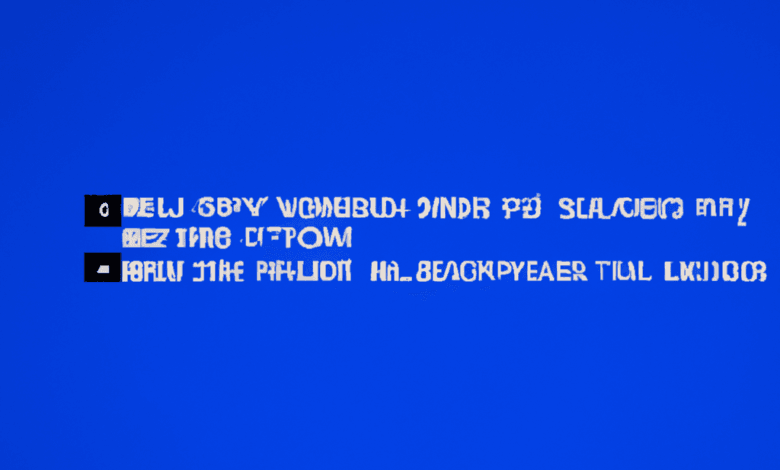Fixing the Most Common Blue Screen Errors on Windows

Blue Screen of Death (BSOD) errors are a frustrating and disruptive experience for Windows users. These errors, also known as stop errors, occur when the operating system encounters a critical error that it cannot recover from. While the causes of BSOD errors can vary, there are several common issues that can be addressed to resolve these errors and restore stability to your Windows system.
1. Update Device Drivers
Outdated or incompatible device drivers are a common cause of BSOD errors. Device drivers act as a bridge between the hardware and software, and when they are not functioning properly, it can lead to system crashes. To fix this issue, it is crucial to keep your device drivers up to date.
One way to update device drivers is through the Device Manager. Simply right-click on the Start button, select Device Manager, and locate the device with the outdated driver. Right-click on the device and choose Update Driver. Windows will then search for the latest driver and install it if available.
Alternatively, you can visit the manufacturer’s website and download the latest driver directly from there. This ensures you have the most up-to-date and compatible driver for your specific hardware.
2. Check for Hardware Issues
Hardware problems can also trigger BSOD errors. Faulty RAM, a failing hard drive, or overheating components can all lead to system crashes. To identify and resolve hardware issues, you can perform the following steps:
- Run a memory diagnostic test to check for faulty RAM. Windows has a built-in tool called Windows Memory Diagnostic that can be accessed by typing “Windows Memory Diagnostic” in the search bar.
- Check the health of your hard drive using a disk utility program. Windows has a built-in utility called CHKDSK that can scan and repair disk errors. Open Command Prompt as an administrator and type “chkdsk /f” to initiate the scan.
- Ensure that your computer is not overheating. Clean the dust from your computer’s fans and vents, and consider using a cooling pad or additional fans if necessary.
3. Scan for Malware
Malware infections can also cause BSOD errors. Viruses, trojans, and other malicious software can corrupt system files and disrupt the normal functioning of your computer. To scan for malware, it is essential to have reliable antivirus software installed on your system.
Perform a full system scan using your antivirus software and let it remove any detected threats. If you don’t have antivirus software installed, there are several reputable options available for free, such as Avast, AVG, or Microsoft Defender.
4. Undo Recent Changes
If you recently made any changes to your system, such as installing new software or hardware, it is worth considering whether these changes could be causing the BSOD errors. Incompatibilities or conflicts between different software or hardware components can lead to system instability.
To undo recent changes, you can use the System Restore feature in Windows. This feature allows you to revert your system back to a previous state where it was functioning correctly. To access System Restore, type “System Restore” in the search bar and follow the on-screen instructions to choose a restore point.
Summary
BSOD errors can be frustrating, but with the right troubleshooting steps, they can be resolved. By updating device drivers, checking for hardware issues, scanning for malware, and undoing recent changes, you can address the most common causes of BSOD errors on Windows.
Remember to regularly update your device drivers to ensure compatibility and stability. Additionally, keep your system clean and free from malware by using reliable antivirus software. If you encounter a BSOD error, don’t panic. Instead, follow the steps outlined in this article to diagnose and fix the issue, restoring your Windows system to a stable state.




